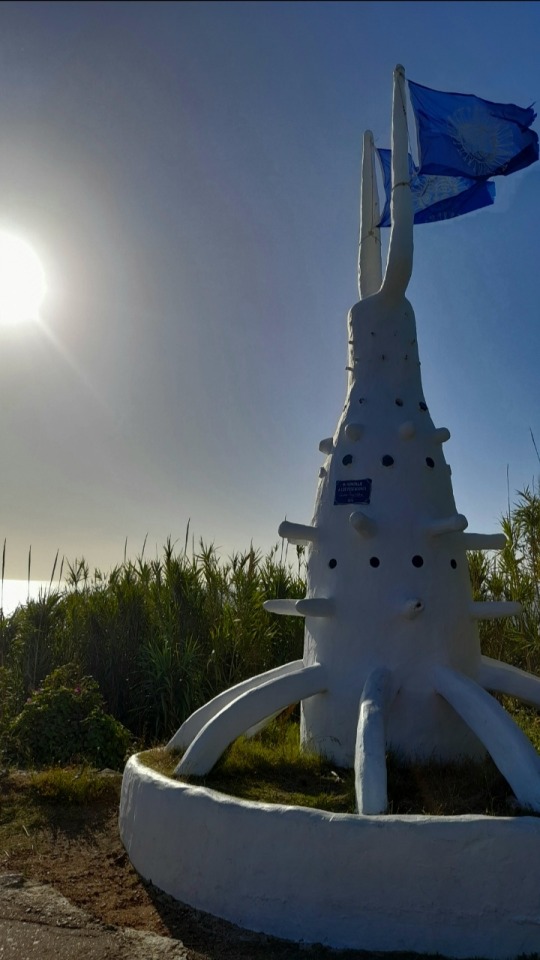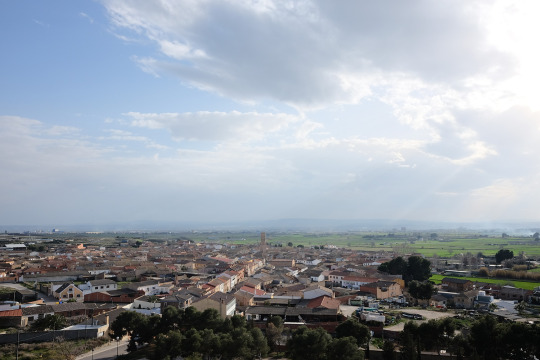#pueblo artist
Text
Women's History Month
Pablita Velarde (1918–2006)
Pablita Velarde was born in Santa Clara Pueblo, New Mexico. She attended an Indian school and it was there her talent was recognized and fostered.
Velarde learned to paint with watercolors in the flatline style (fig. 1). In the 1950s Pablita Velarde learned to create pigments derived from natural sources, developing a similar process to fresco secco. (fig. 2)
Pablta Velarde is considered one of the most important artists of the American Southwest. She has won numerous awards and honors and her work can be found in many museums worldwide.

Fig 1: Basketmaking • 1940

Fig. 2: The Turtle Dance • 1953 • Watercolor (derived from natural sources)

The four-quadrant painting above memorializes and preserves the crafts that were a mainstay of Pueblo communities for many generations. In the lower right, drum makers are depicted; going around the circle clockwise, the pottery makers, the jewelers, and the moccasin makers. (Fig. 2)
References:
• Wikipedia
• Medicine Man Gallery: Pablita Velarde biography
• Indian Pueblo Cultural Center of Albuquerque
• Craftsmanship Magazine
#art#painting#fine art#art history#american history#native american history#pueblo artist#watercolor painting#pablita velarde#native american woman artist#woman artist#cultural heritage#american artist#20th century american art#women's history month#pagan sphinx art blog
8 notes
·
View notes
Text
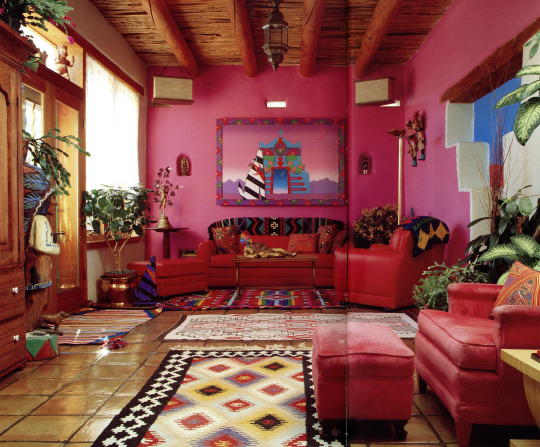
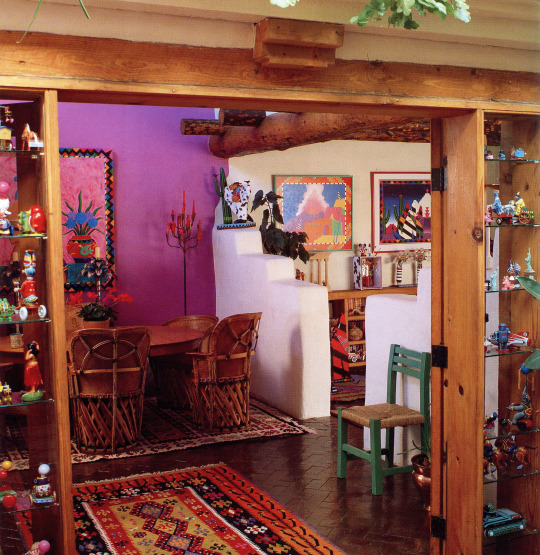


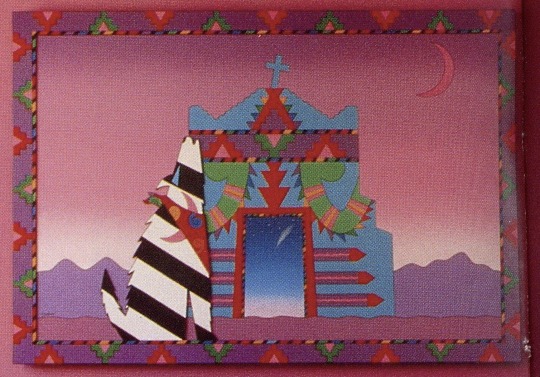
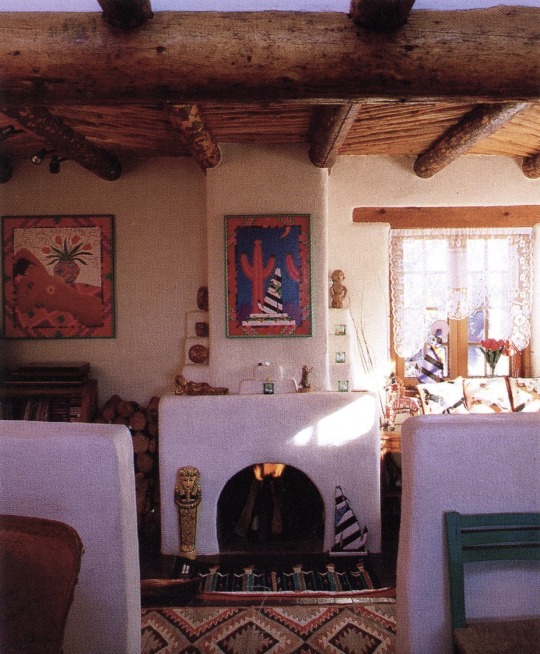
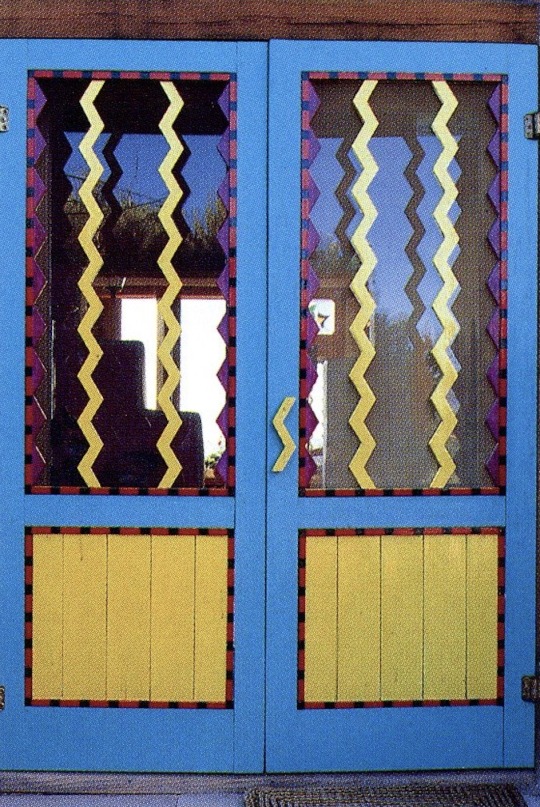


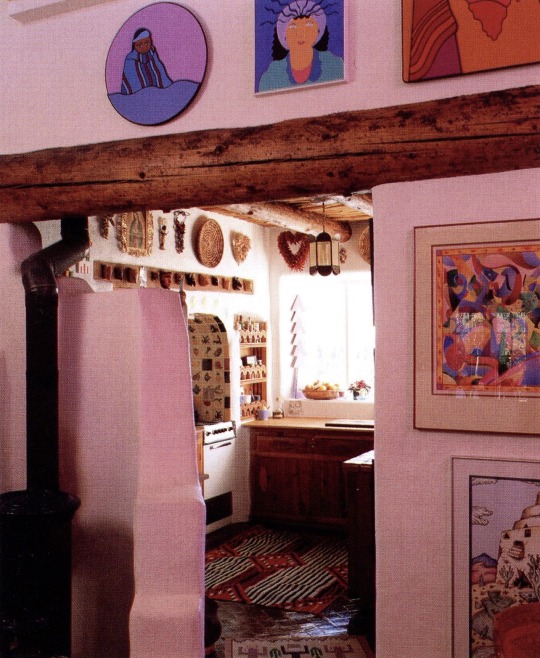
Home of the artist/designer Tavlos - Santa Fe, NM (1990s)
A 'postmodern southwestern' take on Pueblo architecture and indigenous art -- elements of styles we study like Whimsicraft & Earthy Southwestern.
Scanned from the book, 'In Artists' Homes: The Living Spaces of Contemporary Artists' (1992)
#1990s#1980s#90s#80s#design#interior design#interiors#architecture#southwestern#pueblo#tavlos#artist#designer#whimsicraft#colorful#bold#bright colors#art
573 notes
·
View notes
Text

Tewa artist Helen Hardin (also known as Tsa-Sah-Wee-Eh) - 1978
60 notes
·
View notes
Text

Aché🫂
30/12/23
with love,
B 🫀
#aesthetic#poetry#self love#i love you#with love#artists on tumblr#affirmations#art#black women#affirmdaily#yung pueblo#black poems#spoken word poem#pretty words#spiritual alignment#african spirituality#synchronicity#self healing#higher frequency#higherconsciousness#higher self#trust the process#be your true self#true self#true words#inhale exhale#ache#thankful#the art of conversation#eternal sunshine of the spotless mind
44 notes
·
View notes
Text

#yung pueblo#intention#feelings#love#life#relationship#heartbreak#quotes#lost love#reading#artists on tumblr#books#quote#art#poetry#first love#wise sayings#wise words#self healing#mental wellbeing#spiritualawakening#spiritualhealing#self love#self awareness
162 notes
·
View notes
Text

#fujifilm#photography#fotografia#photo#foto#photographers on tumblr#original photographers#artists on tumblr#architecture#arquitectura#building#edificio#light#luz#sky#cielo#pueblo#village#street#street photography#arbol#tree
10 notes
·
View notes
Text

Acoma Pueblo potters (New Mexico)
The World of the American Indian, National Geographic, 1974
#indigenous art#indigenous#indigenas#indigenous history#acoma pueblo#ceramics#native art#indigenous artists#folk art#New Mexico#pueblo#vintage#nat geo
98 notes
·
View notes
Text
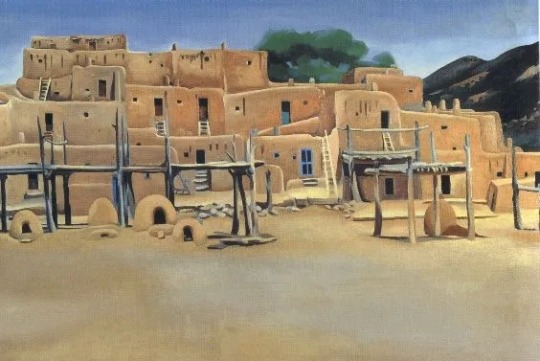
Georgia O'Keeffe
Taos Pueblo
1929-1934
#georgia okeeffe#american art#american artist#american painting#american painter#american landscape#pueblo#southwest#women artists#woman artist#woman painter#landscape aesthetic#aesthetic#beauty#american realism#realism#modern art#art history#aesthetictumblr#tumblraesthetic#tumblrpic#tumblrpictures#tumblr art#tumblrstyle#artists on tumblr
14 notes
·
View notes
Text
She have the stupid

5 notes
·
View notes
Text
The Pueblo Moccasin Makers

Aaron Cajero began making traditional, Pueblo-style moccasins while growing up at Jemez Pueblo, which lies in the foothills of the Jemez Mountains northwest of Albuquerque. He was in the seventh grade at the time. Today, his moccasins are worn by hundreds of ceremonial dancers on Pueblo plazas throughout New Mexico, and he usually has a backlog of orders which can take up to six months to fill.
Part of the delay in filling moccasin orders is due to his multifaceted life: Cajero is also a hunting guide, a potter, a traditional bow maker, and a teacher at the Jemez elementary school, where he teaches physical education along with history, language, and traditional Pueblo culture. His cultural studies range from the Pueblos' historical forms of government to moccasin-making and spiritual practices. Cajero knows much of this curriculum personally, having served as his tribe's lieutenant governor three times, and as its overseer of traditional religious practices.
Before starting a new pair of moccasins, Cajero first traces the dancer's feet on heavy paper, measures foot height, and notes any unusual physical features. He then cuts into a thick piece of cowhide, creating a shape that's slightly larger than his paper outline. After soaking the new sole in water to soften it, he turns up the outer edge -- a extremely difficult task that has left Cajero with very strong hands.
For the moccasins' upper wraps, which must be soft and pliable, Cajero prefers to use fine-grade deer or elk hide. Getting quality supplies can be tough, so Cajero sometimes makes his own leather from the hides of deer or elk he hunts himself, or buys from other Pueblo hunters. He prefers a thick hide so that the moccasins hold up over time. Even for the moccasin tops, if the leather is too thin it sags, creating bulges where the wraps overlap. It needs to look nice and smooth.
To stitch the uppers to the sole, Cajero typically uses clear fishing line, because it's lightweight, transparent, and relatively easy to work with. For a moccasin that is entirely authentic, however, he uses elk sinew, which must be kept wet during the stitching. Sinew is more difficult than a nylon line to thread through the leather's holes, which he punches with a tool he made himself by embedding a heavy needle into a wooden handle. Cajero has found that sinew makes a tighter stitch, because it tightens itself as it dries, but it takes more time.
This means that a pair of moccasins -- when made with sinew, and leather that Cajero has tanned himself -- runs about $1,000, more than twice the price of a standard pair. It costs more to do it all the old way, but it is well worth it for many traditional dancers.
12 notes
·
View notes
Text
Roxanne Swentzell
youtube
Roxanne Swentzell was born in 1962 in Taos Pueblo, New Mexico. Swentzell is a sculptor who uses the coil method, a traditional Santa Pueblo technique for clay sculpting. She also produces works in bronze. Swentzell's first public exhibition was in 1984, and her work has been in several more since, including a 1998 exhibition at the White House. Her work can be found in the collections of the National Museum of the American Indian, the Denver Art Museum, the Brooklyn Museum, and other institutions.
#art#artists#native american#american indian#santa clara pueblo#pueblo#american indian art#indigenous#indigenous women#indigenous art#native art#native artists#new mexico#Youtube
23 notes
·
View notes
Text
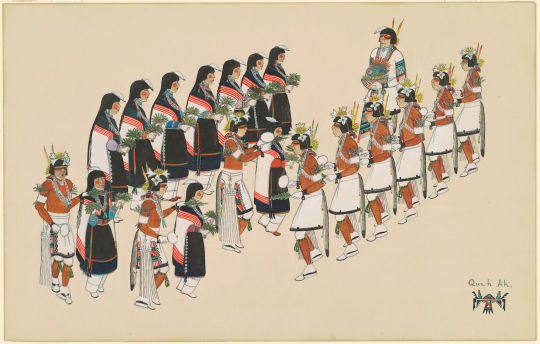
Tonita Peña (Quah Ah; Cochiti Pueblo, born San Ildefonso Pueblo, 1893–1949), Pueblo Parrot Dance, ca. 1935, gouache over graphite on wove paper, 14 × 22 in. (35.6 × 55.9 cm). National Gallery of Art, Washington, D.C., Corcoran Collection.
4 notes
·
View notes
Text
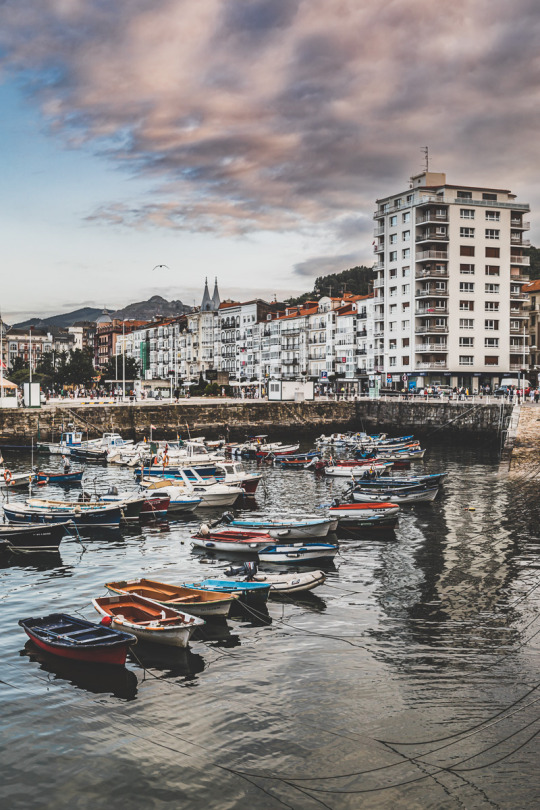
#Atardecer junto al #puerto de #CastroUrdiales.
#Sunset at CastroUrdiales #marina.
#Cantabria, #Spain.
#mar #sea #Cantabrico
IG: @pedrocobo_foto
© Pedro Cobo
Please don’t reblog to NSFW/18+ blogs
#© pedro cobo#pedrocobo.com#sunset#atardecer#Cantabria#photographers on tumblr#original photography#original photography on tumblr#spain#canon#pueblos de españa#spanish towns#street#mar#sea#seascape#boats#barca#marine life#artist on tumblr#cityscapes#beautiful#beautiful places#marina
15 notes
·
View notes
Text
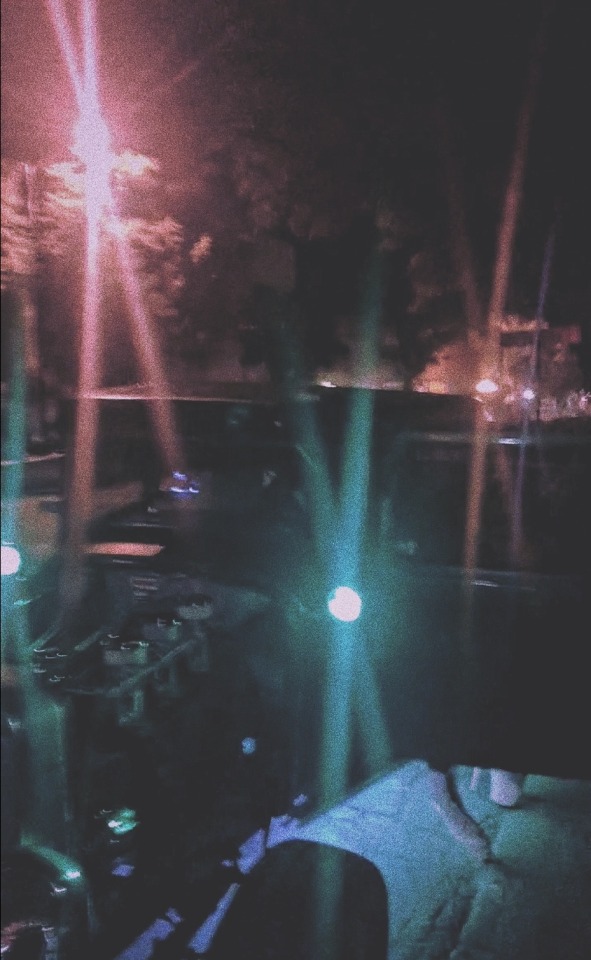
Stripper in the spooky mobile 2, K.A. LuxHill336
#photographers on tumblr#regional gothic#artists on tumblr#southern gothic#photography#north carolina#gothic#country#film photography#rural america#pueblo colorado#pueblo#desert#mideest gothic#y2kcore#y2k fashion#y2k#vintage cars#classic cars#halloween#spooky season#creepy#dancers#dancer#pole dance#pole fitness#pleasersheels#ambience
12 notes
·
View notes
